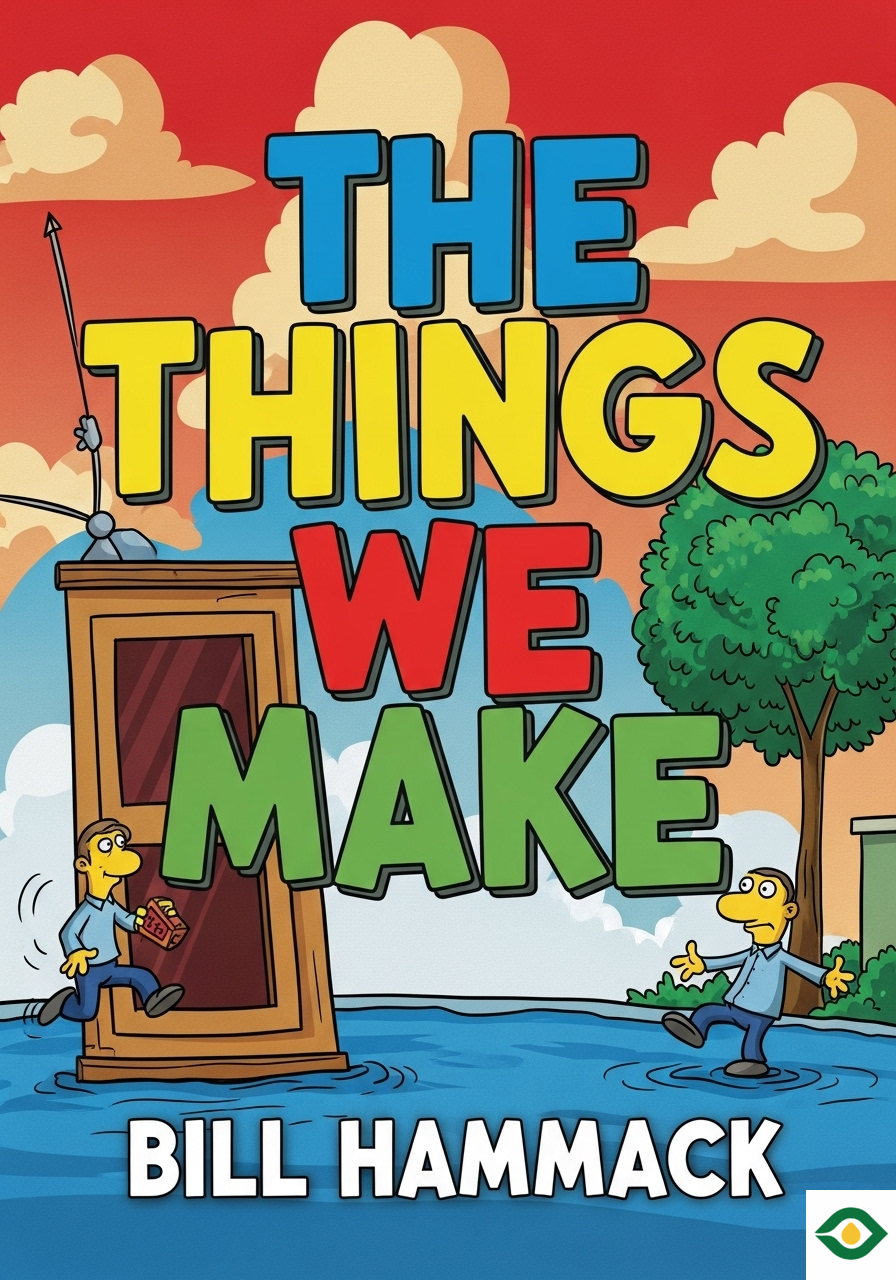Description
The Things We Make, by Bill Hammack, is about the hidden process behind some of the most extraordinary creations in human history. From towering cathedrals and everyday tools to machines that changed the course of wars, the book reveals a single, powerful approach that engineers have relied on for centuries: the engineering method. This is not just about mathematics or technical data. It is about learning to solve problems with limited resources, uncertainty, and imagination. And it is a way of thinking that anyone can apply, not just engineers.
The story begins in medieval Europe, where cathedrals soared higher than ever before. The master masons who designed them weren’t trained scientists or mathematicians in the modern sense. Many couldn’t even read complicated texts. Yet they managed to build structures like the Sainte-Chapelle or Girona Cathedral—buildings that have stood for centuries. Their secret wasn’t just strength of stone but clever problem-solving. They used simple tools, such as ropes folded into equal parts, to measure and test the thickness of walls and arches. If cracks appeared, they adapted. If they had stronger stone, they could trim material away; if not, they added more. The engineering method was about observation, trial, and practical rules of thumb. It was never perfect, but it was always moving forward.
This way of working shows us something important: engineering is not about finding flawless answers but about making the best decisions possible in messy, uncertain conditions. Much like in a chess game, where you might not know the end result but can still position yourself wisely, engineers set themselves up for success by testing, adjusting, and reusing what works.
As the book explains, another key part of the method is deciding what is “best.” But “best” is not a fixed idea. It depends on who the invention is for, the resources available, and the cultural context. The designer Henry Dreyfuss, for example, revolutionized American homes in the 1930s by creating products like telephones and thermostats that were comfortable for the “average” person. His success came from using army data to measure typical body proportions. His designs worked for most people but not for everyone. Women, children, people with disabilities, or people from different regions might not have fit that mold.
This is a reminder that every invention carries the biases of its time and place. Office temperatures often favor men’s metabolic rates, leaving women colder. Car crash test dummies designed around male bodies put women and children at risk. Even everyday items like bicycles or game controllers can exclude groups unless someone deliberately thinks differently. A good example is Georgena Terry, who designed bicycles for women by carefully considering differences in body shape. Her bikes sold in the millions because they solved a problem other bikes ignored.
The method also thrives when resources are limited. History is filled with clever solutions born out of scarcity. A wine trader in ancient Carchemish once faced the challenge of transporting thousands of bottles safely down a dangerous river. Instead of using conventional ships or roads, his team built rafts from logs and goat skins, loaded them with wine, and even carried donkeys along for the return trip. When they reached their destination, they sold not just the wine but the raft wood as well. They then reused the goat skins and donkeys to travel home. Nothing was wasted, and everything was designed with creativity under constraint.
Even today, we see trade-offs like these in something as ordinary as a soda can. Engineers could make cans cuboid to save space, but sharp edges would make them fragile. Cylindrical cans, however, are stronger, use less material, and can still stack efficiently. That choice—the balance between cost, strength, and practicality—is the engineering method at work.
Another powerful element is the role of science. Science gives engineers tools, but engineering is not the same as science. Science asks “why,” while engineering asks “how.” The example of Charles Parsons shows this clearly. Parsons designed a steam turbine that became the standard for generating electricity. He relied on existing scientific knowledge of thermodynamics, but his real breakthrough came from creatively imagining new uses for that knowledge. He experimented, refined, and built on what science had already uncovered, but his vision was what turned equations into working machines. His turbine changed not only naval power but also energy production across the world.
The book also makes it clear that no invention belongs to a single genius. The romantic idea of the lone inventor is misleading. Edison may be remembered for the light bulb, but his work built on countless others, including rivals like Hiram Maxim and collaborators like Lewis Latimer. Progress was shared, and breakthroughs only happened through collective effort. Every invention is layered over centuries of learning, mistakes, and teamwork.
Some inventions are even more unpredictable than that. The story of the microwave oven shows how innovation often takes a winding road. During World War II, British scientists developed magnetrons to detect enemy aircraft. These devices were sent to America, where engineers like Percy Spencer found ways to mass-produce them. While working with magnetrons, Spencer noticed a chocolate bar melting in his pocket and realized the potential for cooking food. What began as a weapon of war became one of the most common kitchen appliances. The household microwave was never the original goal, but it became an unexpected gift of engineering.
By the end, the book leaves us with an appreciation for how deep and creative engineering really is. It is not about having perfect data or unlimited resources. It is about making the most of what you have, learning from mistakes, and daring to push forward. The “best” solution is often temporary, shaped by culture, circumstance, and available tools. Yet these imperfect solutions have given us cathedrals, machines, medicines, and conveniences that define our lives.
Most importantly, Hammack shows that the engineering method is not limited to engineers. Anyone can apply it in daily life. When you face a challenge, think about what resources you already have, what rules of thumb might guide you, and what trade-offs are acceptable. It may not be perfect, but it could be enough to move you forward. Just like the great makers of the past, you can create solutions that last, even if they start small.
The Things We Make is ultimately a celebration of human creativity. It reminds us that behind every object—whether a telephone, a cathedral, or a soda can—there is a story of problem-solving, persistence, and imagination. And by adopting this mindset, we can learn to see the world not just as a collection of objects but as a gallery of engineering marvels.





